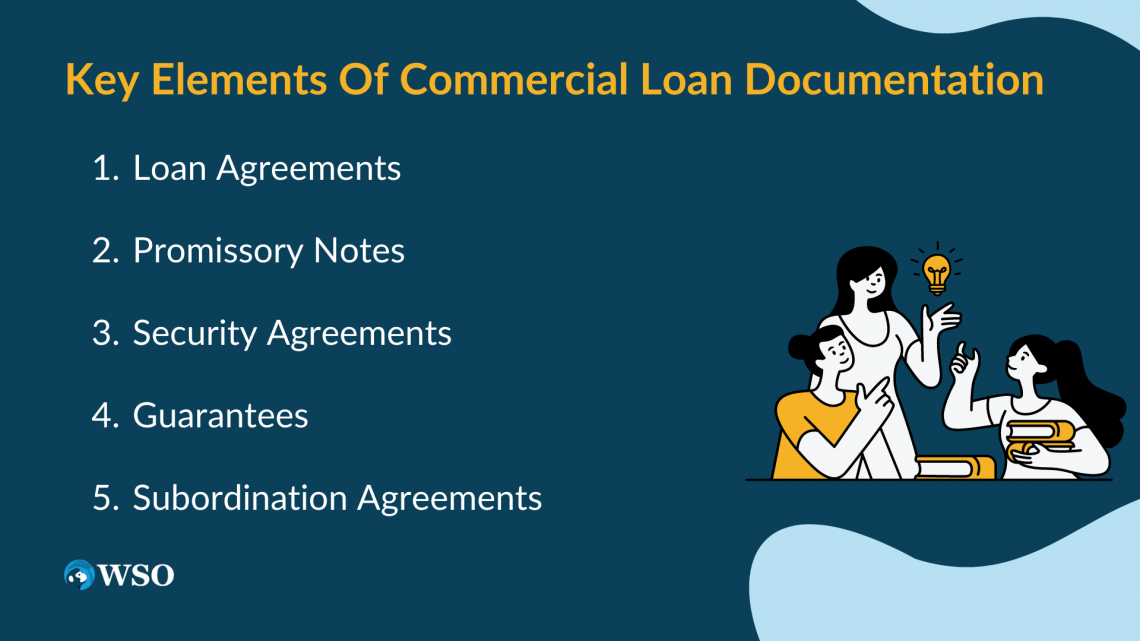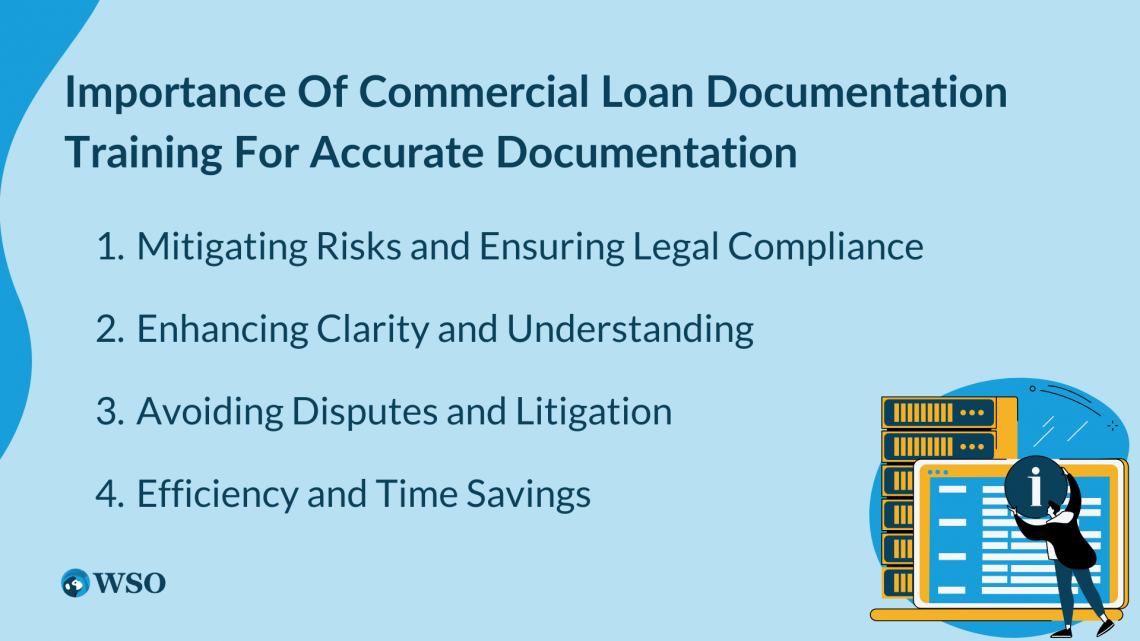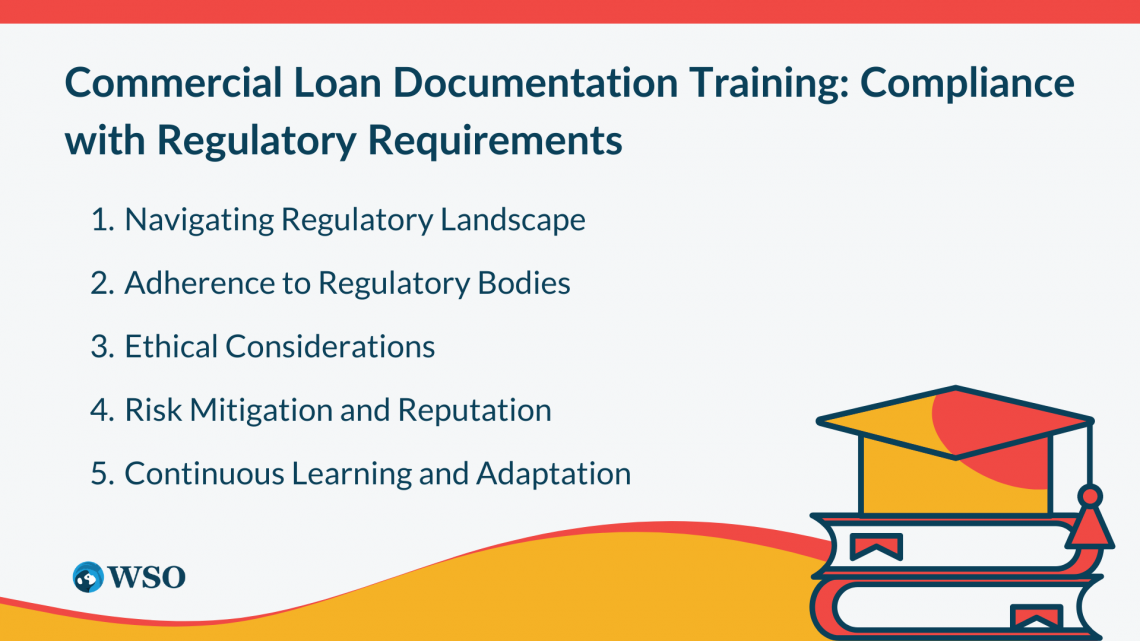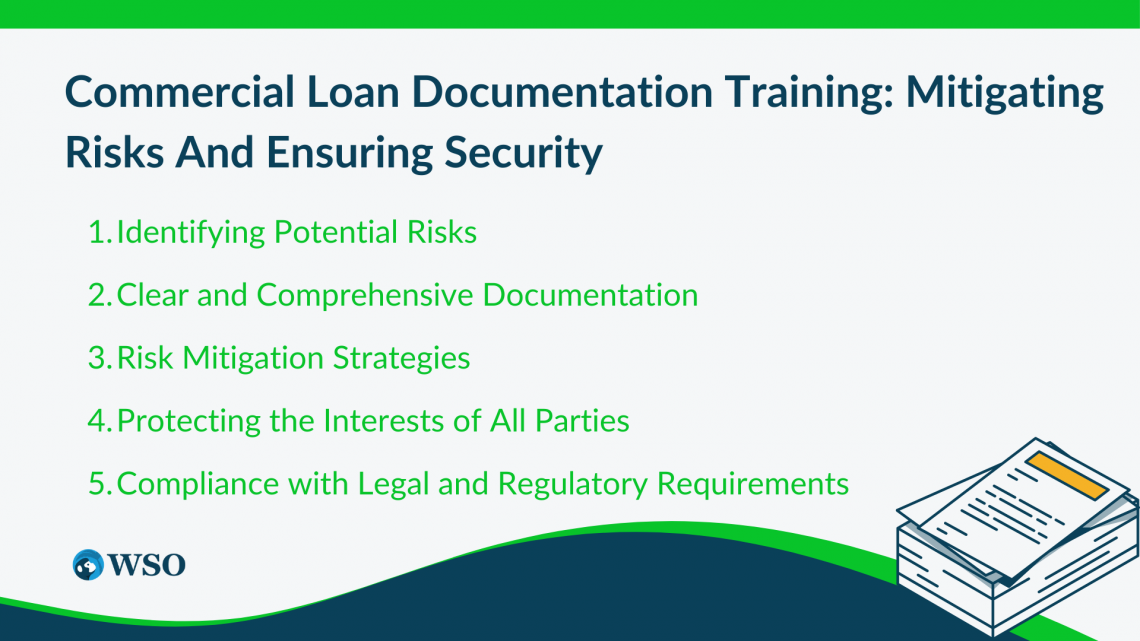Commercial Loan Documentation Training
The Commercial Loan Documentation Training provides bank employees who handle the paperwork related to commercial loans with the necessary training.
What Is Commercial Loan Documentation Training?
When engaging in commercial lending, the significance of proper documentation cannot be overstated. The documentation involved in commercial loans forms the bedrock of the legal agreement between the lender and the borrower.

A comprehensive understanding of the loan documentation process is paramount for professionals operating in the banking and finance industry. In this article, we will delve into the vital role of training and its numerous benefits in ensuring accuracy, compliance, and risk mitigation.
Effective training equips professionals with the necessary knowledge and skills to navigate the intricacies of the documentation process, safeguarding the interests of all parties involved. Accurate documentation is crucial to guarantee a smooth and error-free lending process.
Professionals who have received proper training can effectively draft, review, and interpret these documents with precision, minimizing the chances of errors or omissions that could lead to disputes or legal complications.
Furthermore, compliance with regulatory requirements is of utmost importance in commercial lending. The financial industry is subject to stringent regulations imposed by governmental authorities and regulatory bodies.

By staying abreast of regulatory changes, professionals can confidently navigate the documentation process, knowing they comply with legal and ethical standards.
Another key aspect emphasized in training is risk mitigation. Commercial lending inherently involves certain risks, such as potential defaults, financial losses, or disputes.
With comprehensive training, professionals can identify and assess potential risks associated with inadequate security measures, ambiguous terms, or incomplete documentation.
By recognizing these risks, professionals can take proactive measures to mitigate them effectively, ensuring a more secure lending environment.
Key Takeaways
- Proper commercial loan documentation forms the legal agreement between the lender and borrower, making accurate and comprehensive documentation essential.
- Comprehensive and well-drafted loan documentation ensures clarity and mutual understanding, minimizing misunderstandings and disputes.
- Commercial loan documentation training helps professionals navigate the regulatory landscape and stay updated on changes.
- Effective risk mitigation strategies and compliance with legal and regulatory requirements contribute to a secure lending environment.
Understanding Commercial Loan Documentation
Commercial loan documentation forms the foundation of commercial lending transactions, providing a clear and enforceable framework for lenders and borrowers.

These documents encompass various legal agreements and contracts outlining loans' terms, conditions, and obligations.
By properly drafting and executing loan documentation, lenders and borrowers can protect their rights, mitigate risks, and establish a solid foundation for their financial transactions.
The key elements of Commercial Loan Documentation include:
1. Loan Agreements
Loan agreements are comprehensive documents that establish the foundation of the commercial lending relationship.
These agreements serve as a roadmap for both parties and provide clarity on their rights, responsibilities, and obligations throughout the loan term.
2. Promissory Notes
Promissory notes are essential components of commercial loan documentation. These written instruments serve as formal evidence of the borrower's commitment to repay the loan.
Note
Promissory notes are legally binding and clearly record the borrower's obligations and the lender's rights.
3. Security Agreements
Security agreements are crucial to protect the lender's interests in commercial lending transactions. These agreements establish the terms and conditions governing the collateral pledged by the borrower to secure the loan.
They specify the nature of the collateral, its valuation, and the procedures for enforcing the lender's rights in case of default. Security agreements provide the lender with a level of assurance and recourse, helping to mitigate the risks associated with lending.
4. Guarantees
Guarantees are additional safeguards commonly used in commercial loan documentation. These agreements involve third parties, known as guarantors, who commit to fulfilling the borrower's obligations if the borrower defaults on the loan.
Note
Guarantees provide an extra layer of security for lenders, increasing the likelihood of loan repayment. By involving a guarantor, the lender has an additional source of repayment and can seek recourse from the guarantor if the borrower fails to fulfill their obligations.
5. Subordination Agreements
Subordination agreements are vital elements in certain commercial loan transactions, especially when multiple creditors are involved. These agreements establish the priority of repayment rights among different creditors.
By agreeing to subordination, one creditor agrees to take a lower priority in receiving repayment than another. Subordination agreements are essential when lenders want to ensure their repayment rights are protected and properly ordered.
Note
By including loan agreements and, when applicable, subordination agreements, lenders and borrowers can navigate the lending process with transparency and a shared understanding of their rights and obligations.
Importance of Commercial Loan Documentation Training for Accurate Documentation
Accurate documentation is vital in commercial lending to minimize risks and maintain legal compliance.

We will explore how loan documentation training equips professionals with the skills needed to draft, review, and interpret loan documents accurately, ensuring a smooth and secure lending process.
1. Mitigating Risks and Ensuring Legal Compliance
Commercial loan documentation training emphasizes the importance of accuracy and completeness in drafting loan documents. Ensuring precise documentation significantly reduces the risk of errors, discrepancies, and misunderstandings.
Accurate documentation helps mitigate potential risks associated with loan defaults, legal disputes, and financial losses. It also ensures compliance with relevant laws, regulations, and industry standards, safeguarding the interests of both lenders and borrowers.
2. Enhancing Clarity and Understanding
Accurate documentation promotes clarity and understanding between lenders and borrowers.
Clear and concise loan documents enable all stakeholders to have a common understanding of the terms and conditions, minimizing the risk of misinterpretation or confusion. This clarity enhances trust and facilitates a smoother lending process.
Note
A well-documented loan agreements provide a solid foundation for effective communication and dispute resolution.
When all parties involved have access to clear and concise loan documents, potential disputes can be easily addressed and resolved based on the agreed-upon terms.
By adding an extra layer of transparency and accountability, accurate documentation further strengthens the trust and confidence in the lending process, ensuring a smooth and efficient experience for all parties involved.
3. Avoiding Disputes and Litigation
Inaccurate or incomplete documentation can lead to disputes and even legal challenges. Errors or omissions in loan documents can create loopholes or ambiguities that either party may exploit.
Note
Commercial loan documentation training equips professionals with the knowledge and skills to identify potential pitfalls, eliminate ambiguities, and ensure that all relevant information is accurately captured.
4. Efficiency and Time Savings
Accurate documentation streamlines the commercial lending process by reducing the need for extensive revisions or renegotiations. When loan documents are drafted accurately from the outset, it saves time and resources for both lenders and borrowers.
With proper training, professionals can effectively navigate the complexities of loan documentation, ensuring that all necessary clauses, conditions, and provisions are included, thus expediting the loan approval and closing processes.
Accurate loan documentation is essential for mitigating risks, maintaining legal compliance, and promoting a smooth lending process. Professionals acquire the skills necessary to draft, review, and interpret loan documents accurately through training.
Note
By prioritizing accuracy, lenders and borrowers can minimize disputes, ensure compliance, and establish a solid foundation for successful commercial lending transactions.
Commercial Loan Documentation Training: Compliance with Regulatory Requirements
Compliance with regulatory requirements is essential in commercial lending to ensure legal and ethical standards adherence.

We will explore the significance of compliance in loan documentation and how proper training equips professionals to navigate the documentation process while meeting regulatory guidelines.
1. Navigating Regulatory Landscape
Commercial lending is governed by a complex set of regulatory requirements imposed by various authorities. These regulations aim to safeguard consumers, prevent financial crimes, and maintain fair lending practices.
Through training, professionals gain insights into the regulatory landscape, staying informed about changes and updates to ensure compliance with relevant laws and guidelines.
2. Adherence to Regulatory Bodies
Regulatory bodies establish guidelines and standards for commercial lending practices. Commercial loan documentation training emphasizes the importance of aligning documentation processes with these regulatory requirements.
Note
By understanding and implementing these standards, professionals can ensure compliance and minimize the risk of penalties or legal consequences.
3. Ethical Considerations
Beyond legal requirements, commercial loan documentation training also instills ethical considerations in professionals. Ethical behavior goes beyond mere compliance and focuses on fair treatment, transparency, and responsible lending practices.
Note
Training programs often emphasize ethical decision-making, promoting a culture of integrity and trust in the commercial lending industry.
4. Risk Mitigation and Reputation
Compliance with regulatory requirements reduces the risk of non-compliance penalties, lawsuits, and reputational damage.
By receiving comprehensive training, professionals gain the knowledge and skills to navigate regulatory challenges effectively, minimizing risks and protecting the reputation of their institutions.
5. Continuous Learning and Adaptation
The regulatory landscape constantly evolves, introducing new laws, regulations, and guidelines regularly. Commercial loan documentation training promotes a culture of continuous learning, enabling professionals to stay updated on regulatory changes and adapt their practices accordingly.
This commitment to ongoing education ensures ongoing compliance and helps professionals anticipate and address potential challenges in the documentation process.
Note
With proper compliance, lenders and borrowers can maintain the integrity of the lending process, protect their interests, and foster trust in the financial industry.
Commercial Loan Documentation Training: Mitigating Risks and Ensuring Security
Mitigating risks and ensuring security is a critical aspect of loan documentation. This article explores the significance of properly structured loan documentation in mitigating risks for lenders and borrowers.

Professionals trained in loan documentation gain the skills to protect the interests of all parties involved.
1. Identifying Potential Risks
Commercial loan documentation training equips professionals with the ability to identify potential risks associated with lending transactions.
By thoroughly reviewing loan documents, professionals can identify areas of concern, such as inadequate security measures, ambiguities in repayment terms, or potential default scenarios.
This proactive approach allows lenders and borrowers to address these risks before they escalate into significant issues.
2. Clear and Comprehensive Documentation
Properly structured loan documentation provides a clear framework for all parties involved in the lending process. It includes essential elements such as interest rates, repayment schedules, collateral, and default provisions.
Note
Clear and comprehensive documentation ensures that lenders and borrowers completely understand their respective obligations and rights, reducing the likelihood of disputes and misunderstandings.
3. Risk Mitigation Strategies
Commercial loan documentation training enables professionals to implement effective risk mitigation strategies. This may involve strengthening security measures, clarifying ambiguous terms, or incorporating contingency plans for potential default scenarios.
By implementing these strategies, professionals ensure the security and stability of the lending process.
4. Protecting the Interests of All Parties
Properly mitigating risks through loan documentation protects the interests of both lenders and borrowers. Lenders can minimize the risk of financial loss by ensuring that collateral and repayment terms are adequately secured.
On the other hand, borrowers benefit from clear documentation outlining their rights and responsibilities, providing a transparent lending experience.
Note
Professionals contribute to a mutually beneficial and secure lending relationship by effectively mitigating risks.
5. Compliance with Legal and Regulatory Requirements
In addition to mitigating risks, training emphasizes compliance with legal and regulatory requirements. Compliance with these requirements promotes transparency, fairness, and ethical lending practices.
Mitigating risks and ensuring security through properly structured documentation is crucial for lenders and borrowers.
Note
By identifying potential risks, implementing effective risk mitigation strategies, and complying with legal and regulatory requirements, professionals in the field contribute to a secure and stable lending environment.
Conclusion
Accurate documentation is crucial for mitigating risks and ensuring legal compliance, as inaccuracies or omissions can lead to disputes, financial losses, and legal challenges.

Compliance with regulatory requirements is equally vital to navigate the evolving landscape of commercial lending and upholding ethical standards.
Clear and comprehensive documentation provides transparency and clarity, outlining lenders' and borrowers' rights, obligations, and remedies.
By adhering to legal and regulatory standards, professionals promote a secure and stable lending environment, fostering trust and confidence in the industry.
By investing in commercial loan documentation training, professionals elevate their expertise and contribute to the overall success of lending transactions.
Note
The training equips them with the necessary tools to navigate complex loan agreements, address potential risks, and ensure accuracy and compliance throughout the lending process.
Ultimately, a solid foundation in loan documentation enables professionals to streamline operations, enhance efficiency, and build strong and mutually beneficial relationships between lenders and borrowers.
In the dynamic landscape of commercial lending, the importance of accurate documentation, compliance, and risk mitigation cannot be overstated.




or Want to Sign up with your social account?